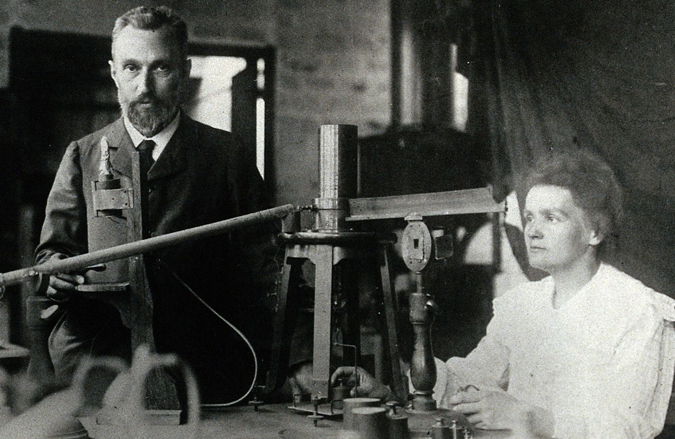Isolating Polonium
Marie Curie was born on November 7, 1867, as the youngest of five children. In 1891, Curie moved to France and lodged with her sister while studying physics and math at Sorbonne University in Paris. She met her future husband, Pierre Curie, in 1894 and married him a year later; both the Curies then began work trying to uncover the mysteries of physics’ most mind-boggling particles. The Curies worked at the School of Chemistry and Physics in Paris and began researching the invisible rays given off by an element called uranium. Marie Curie collected samples of a mineral called pitchblende and discovered it gave off more rays than did uranium alone. She hypothesized that pitchblende was made of more than just uranium, and began trying to separate its different contents. Eventually, she and her husband were able to isolate a new element called polonium: one that was 330 times more radioactive than uranium.
Proving the Existence of Radium at the Expense of Their Health
Even after extracting polonium, Marie Curie still noticed a radioactive liquid that remained in the composition of pitchblende, and decided to study it further. She and her husband published a paper theorizing about the existence of this new element in 1898, calling the element radium: but they still needed to find some concrete proof. To do so, Curie purchased huge amounts of pitchblende with the uranium already removed—a highly radioactive substance that had negative effects on her and her husband’s health. After years of research and extraction, Marie and Pierre Curie proved radium’s existence in 1902. Both of them won the Nobel Prize for physics in 1903 due to their hard work.
Battlefield Technology
In 1906, Pierre Curie died in a horse and cart accident. Marie continued with her work; in World War I, she helped to create portable x-ray units that were used to diagnose injuries on the battlefield. By 1914, her machines—known as Petits Curies—were being transported to the front lines of battles along with Marie herself. The technology used in the Petits Curies is similar to what we use in modern-day fluoroscopy machines that examine moving images in the body, such as a beating heart.
First Woman to Win the Nobel Peace Prize in Physics
Marie Curie died in 1934 due to a medical condition developed after years of radiation exposure at age 66—but not before leaving a significant impact on the science world. She was the first woman to win a Nobel Prize in physics, and the first person to receive two Nobel Prizes: one in physics, and another for chemistry in 1911. She made large strides in the fields of science as a smart, talented, and powerful woman.
Activities and Articles Related to Marie Curie


